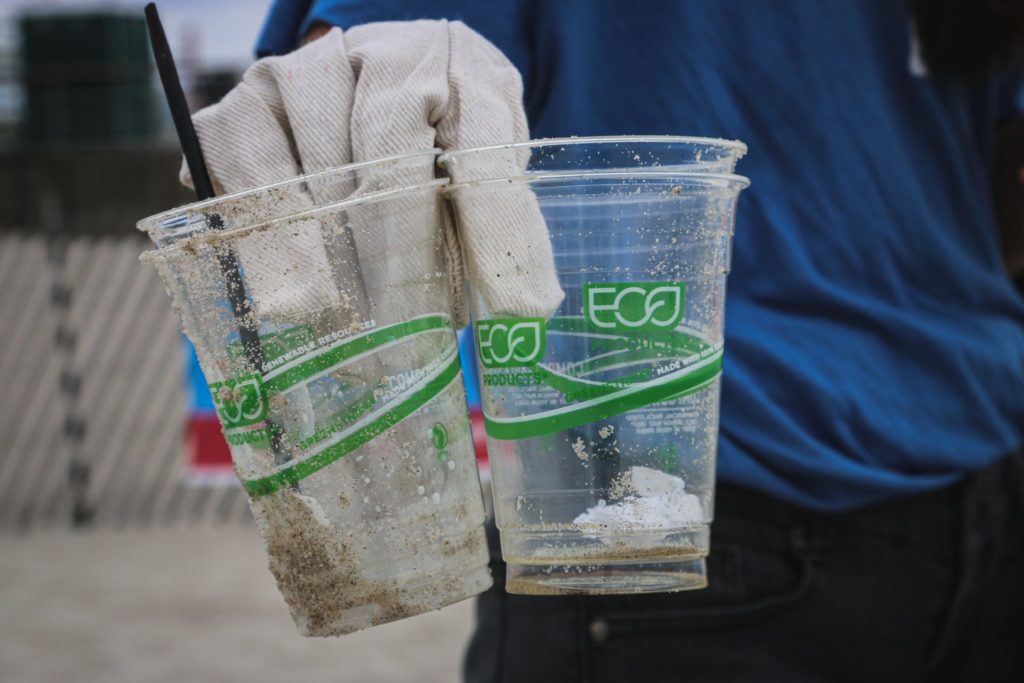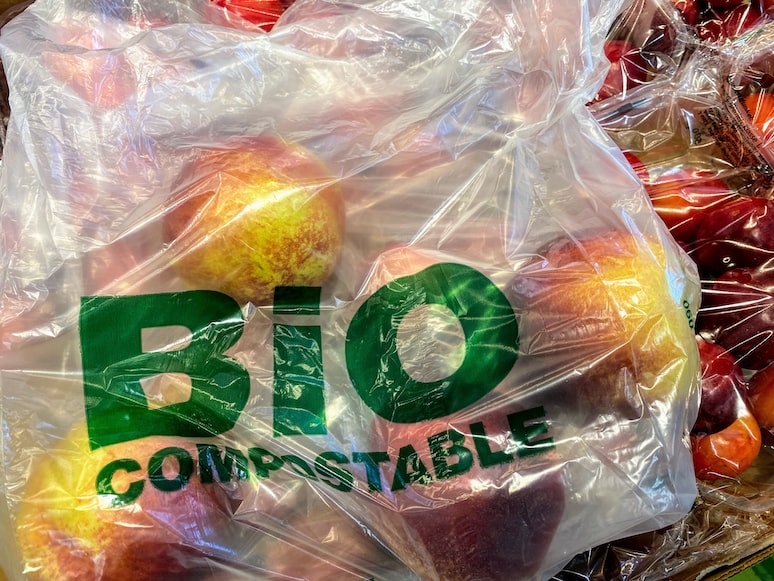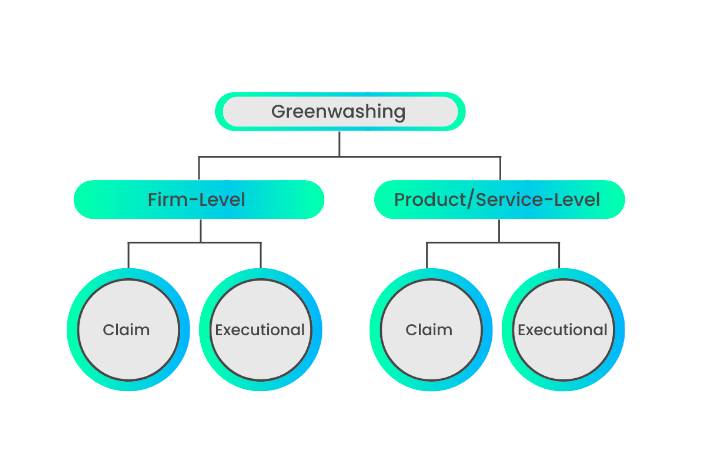All About Greenwashing
In our hyper-capitalist societies, we are used to organisations claiming how they’re actively contributing to the global quest to save the Earth. “Green”, “Eco-Friendly”, “Bio”, “Organic” — if you have ever been misled by any of these words as a result of a marketing gimmick, then you might want to learn more about the term corporate “greenwashing.”

What is Greenwashing and why should we care about it?
Scientists warn about the detrimental consequences for the future of our civilization, linking our unsustainable consumption patterns to increasing economic, social, and climate disruptions. Whether the global sustainability goals will be achieved heavily depends on the capacity of companies to reform, redesign and restructure their business models to minimise their negative impact. Yet, most business leaders appear unfazed when managing their firms and organisations, and their role in achieving sustainability.
The increasing concerns about the natural ecosystem have led consumers to become more picky when it comes to
their purchasing decisions. This shift resulted in intense pressure on companies to adopt more environmentally responsible practices. However, instead of dedicating their efforts to environmental endeavours, many companies resort to backdoor ways of gaining their share of customers. The intention is to mislead consumers who prefer to buy from stainable brands. Now more companies claim to be socially and environmentally conscious without making any notable sustainability efforts. But where did this all start?
“Greenwashing” was first coined in 1986 by activist Jay Westerveld, who noticed a hotel began asking guests to reuse towels, claiming it was a water conservation strategy. However this initiative was not introduced to help the environment or local ecosystem, and the hotel did not take any actions to address more significant environmental issues. Furthermore, they were actually expanding and building new infrastructure at the same time.
Where are we today with greenwashing? To make it short: it is not looking good! TerraChoice reported that 95% of products claiming to be green in North America pulled at least one of the “sins of greenwashing.” According to advertising firm Ogilvy, over the last few decades greenwashing practices are rising to epidemic levels. With the growth of green markets, followed by greenwashing, a trust problem has emerged as customers now have difficulty identifying which products are truly green.
In this article, we will discuss the real consequences of greenwashing and provide you with some tips on how to spot some of the most common greenwashing tactics, and most importantly — how consumers can avoid falling into that trap.

Why is Greenwashing even a thing?
Society’s increasing concern regarding the natural ecosystem has pressured companies to make all sorts of efforts to implement greener practices so they can ‘‘save face’’ and gain approval from their stakeholders. With regulations tightening around the world, companies are moving towards finding sustainable solutions to align themselves with regulatory requirements.
These developments can be seen in the European Union (EU) daily. With the EU Taxonomy being implemented, the pressure for larger companies operating in the EU to report how their business is aligning with sustainable guidelines is rising. The U.S. Congress has passed a package of bills for billions of dollars in investments in climate protection and the social sector. Following the Senate, the House of Representatives has now also approved the so-called Inflation Control Act. In addition to the equivalent of €359 billion for climate protection, $64 billion (€62 billion) is also earmarked for healthcare.
Environmental regulations, which help overcome inconsistent information about firms’ environmental quality, as well as behavioural intentions, can be an effective way for companies to achieve social acceptance. However, our results suggest that not all environmental actions are effective, and some might even be detrimental. This is the case for companies which do not ‘‘walk the walk’’ and resort to greenwashing.
But why do firms want to be perceived as environmentally friendly in the first place? Environmental legitimacy has become a relevant competitive asset in the war for market share. Indeed, companies that gain environmental legitimacy are likely to compete more effectively and thrive (Dowling and Pfeffer, 1975; Lamin and Zaheer, 2012). Increasing consumer interest in sustainability is also being reflected in the choice of brands that claim to be environmentally sustainable and demonstrate more ethical practices and values. As these sustainable transformation processes are costly and time-consuming, some brands see greenwashing as an easy alternative of real transformation whilst still reaping the benefits.

How are Greenwashing tactics implemented by firms?
When reading other articles on greenwashing tactics, you will often come across the Seven Sins of Greenwashing defined by TerraChoice. Namely, these are the sins of the hidden trade-off, sin of no proof, sin of vagueness, sin of irrelevance, sin of lesser of two evils, sin of fibbing, and the sin of worshipping false labels. While the original theory highlights that the mentioned seven sins are mainly focused on the product and service level, we examine greenwashing on a firm level.
While product- (or service-) level greenwashing is concerned with an orchestrated deception around a specific offering, firm-level greenwashing is far more broad. Delmas and Burbano (2011) define firm-level greenwashing as the act of misleading consumers regarding the environmental practices of an organisation as a whole.
An example of firm-level greenwashing is the “Ecomagination” campaign by General Electric, who advertised the organisation’s environmental practices while also lobbying to fight new clean air EPA requirements. An example of product-level greenwashing is the Energy Star mis-certified refrigerators from LG. The eco-label claimed energy efficiency. Upon closer examination, the ten models of LG refrigerators did not meet the energy efficiency criteria to carry that certification. When we take a closer look at firm- or product-level greenwashing, it becomes apparent that there are two subcategories of strategies: claim greenwashing and executional greenwashing.
Claim greenwashing uses textual arguments that directly or indirectly refer to the ecological or environmental benefits of consuming a product or a service and entails a misleading environmental claim. Typically you’ll see these three categories of claim greenwashing: (1) those employing false claims; (2) those omitting important information that could help evaluate the claim sincerity, and (3) those employing vague or ambiguous term, which could simply be just straight up lying (Pearson, 2020).
In contrast, executional greenwashing does not rely on textual claims at all. This strategy implements nature-evoking elements into their packaging and marketing, such as using natural colours or nature-based sounds. Backgrounds on advertisements or products with a nature theme, pictures of endangered animals or renewable energy sources, are all examples of an executional greenwashing strategy. According to Hartmann and Apaolaza-Ibáñez (2009), by relying on natural imagery and activating positive references, these elements can appeal to a consumer’s perception, making them believe a certain organisation or/and their products (services) to be ecologically friendly.
While spotting greenwashing isn’t always easy, becoming aware of how companies use greenwashing tactics to benefit their brand or sell products allows consumers to do their own research and make informed decisions on where to spend their money.
Sources
Berrone, P., Fosfuri, A., & Gelabert, L. (2015). Does Greenwashing Pay Off? Understanding the Relationship Between Environmental Actions and Environmental Legitimacy. Journal of Business Ethics, 144(2), 363–379. https://doi.org/10.1007/s10551-015-2816-9
Chen, Y., & Chang, C. (2013). Towards green trust. Management Decision, 51(1), 63–82. https://doi.org/10.1108/00251741311291319
de Freitas Netto, S. V., Sobral, M. F. F., Ribeiro, A. R. B., & Soares, G. R. D. L. (2020). Concepts and forms of greenwashing: a systematic review. Environmental Sciences Europe, 32(1). https://doi.org/10.1186/s12302-020-0300-3
Delmas, M. A., & Burbano, V. C. (2011). The Drivers of Greenwashing. California Management Review, 54(1), 64–87. https://doi.org/10.1525/cmr.2011.54.1.64
Dowling, J., & Pfeffer, J. (1975). Organizational Legitimacy: Social Values and Organizational Behavior. The Pacific Sociological Review, 18(1), 122–136. https://doi.org/10.2307/1388226
- Contreras-Pacheco, O., & Claasen, C. (2017). Fuzzy reporting as a way for a company to greenwash: perspectives from the Colombian reality. Problems and Perspectives in Management, 15(2), 525–535. https://doi.org/10.21511/ppm.15(si).2017.06
Hartmann, P., & Apaolaza-Ibáñez, V. (2009). Green advertising revisited. International Journal of Advertising, 28(4), 715–739. https://doi.org/10.2501/s0265048709200837
Lamin, A., & Zaheer, S. (2012). Wall Street vs. Main Street: Firm Strategies for Defending Legitimacy and Their Impact on Different Stakeholders. Organization Science, 23(1), 47–66. https://doi.org/10.1287/orsc.1100.0631
Mangini, F., Chafik, L., Madonna, E., Li, C., Bertino, L., & Nilsen, J. E. I. (2021). The relationship between the eddy-driven jet stream and northern European sea level variability. Tellus A: Dynamic Meteorology and Oceanography, 73(1), 1886419. https://doi.org/10.1080/16000870.2021.1886419
Pearson, J. (2010). Turning Point. Are We Doing the Right Thing? Leadership and Prioritisation for Public Benefit. Journal of Corporate Citizenship, 2010(37), 37–40. https://doi.org/10.9774/gleaf.4700.2010.sp.00006
Scanlan, S. J. (2017). Framing fracking: scale-shifting and greenwashing risk in the oil and gas industry. Local Environment, 22(11), 1311–1337. https://doi.org/10.1080/13549839.2017.1345877
Shrivastava, P., & Hart, S. (1995). Creating sustainable corporations. Business Strategy and the Environment, 4(3), 154–165. https://doi.org/10.1002/bse.3280040307
Siegel, F. (2014, June 1). The poverty of environmentalism. Gale Academy. Retrieved September 1, 2022, from https://go.gale.com/ps/i.do?id=GALE%7CA372450450&sid=googleScholar&v=2.1&it=r&linkaccess=abs&issn=01472011&p=AONE&sw=w&userGroupName=anon%7Edfbb0348
Pimonenko T., Bilan Y., Horák J., Starchenko L., Gajda W. (2020). Green Brand of Companies and Greenwashing under Sustainable Development Goals. Sustainability, 12(4):1679. https://doi.org/10.3390/su12041679